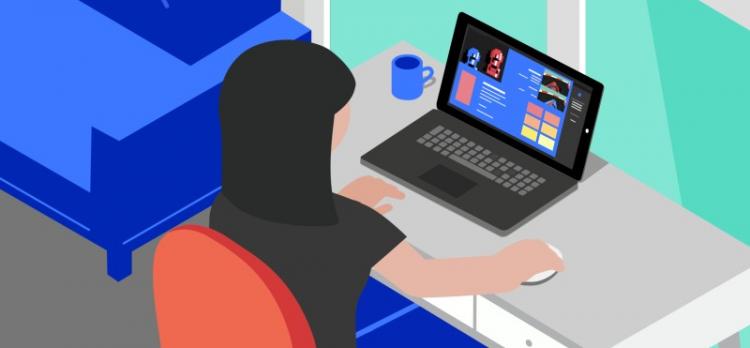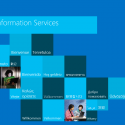This post was most recently updated on February 25th, 2023.
3 min read.This article explains one way to fix a horribly laggy desktop user experience in Windows 10 (and probably 11) when your laptop is beefy enough it should not lag and even has a dedicated NVIDIA Graphics card.
At least applying this fix is going to be quite straightforward – but let me first explain the issue I experienced and what it was actually like.
Background
I have a Dell XPS 15 9510 – a pretty beefy machine with 32Gbs of RAM, something like 16 fake processors and a freaking NVIDIA GeForce RTX 3050 Ti as the graphics card.
A GeForce RTX 3050 Ti. In a laptop, of all places. What a time to be alive!
But that said, whenever I’d hook an external monitor or 2 to my laptop and open my 200 browser tabs, my desktop started to freeze.
Not going to lie, for a second I thought the browser tabs had something to do with it. But after looking at Resource Manager for a while, it was obvious that most of the memory was consumed by other stuff. Like my least favourite resource hog – OneDrive.

I worked through a few tricks I knew to free some RAM (yes, I rebooted my laptop). But the same thing started happening before I even touched the browser. If I just opened some of my dev tools (namely, Visual Studio and Windows Terminal).
I tried closing the apps one by one. Even OneDrive. Well, actually, I started with OneDrive, because that’s just a pretty good bet. But any time I’d start them up again, they’d feel really slow. The machine would feel slow.
And when Windows Terminal was on, my mouse moved like its FPS was suddenly 3. And there was no difference in the choppiness and lag whether I had 0 or 16Gb of RAM free.
That was… Odd.
Then I realized something. Everything that was developed in UWP or WinUI was incredibly laggy. Text in Windows Terminal appeared incredibly slowly. Opening PowerToys lagged the machine to no end. Trying to use the Start Menu slowed any other animations to a crawl.
That made me think – what if my UWP or WinUI libraries were somehow broken?
Problem
But believe it or not, it’s not actually the WinUI’s or UWP’s fault! They’re just the first ones to suffer because whatever abstraction layer they’re built on makes them more graphics-intense than WinForms and other less fancy tech. And it dawned upon me – was I really running out of graphics memory?
Well – not really. My RTX 3050 Ti was literally idle. Because it was not in use. Windows made sure of that.
Ah. The integrated graphics card was 100%, with not a moment’s respite. That might be a bit suboptimal.
Solution
This how-to explains how to switch from integrated graphics to an actual graphics card (if your laptop has one).
Unfortunately, the exact procedure only applies to you if you have a Nvidia graphics card. For AMD, I’m sure there’s a more delightfully named app than “control panel” – something like “AMD OVERDRIVE” or “AMD BOOST UNLOCK OVERKILL XP” that does exactly the same thing but supports dark mode and has all kinds of fancy gamer graphics on it. NVIDIA seems to have chosen a more corporate path in its branding lately.
Time needed: 5 minutes
How to switch from integrated graphics to a Nvidia graphics card on a Windows laptop?
- Install NVIDIA Control Panel if you don’t have it already
You’ll need NVIDIA Control Panel, and you can get it from here: https://apps.microsoft.com/store/detail/nvidia-control-panel/9NF8H0H7WMLT
- Navigate to “3D Settings” > “Manage 3D settings”
You’ll need to open “Manage 3D settings” – it’s not that hidden, you can find it like this:

- Select a beefier preferred graphics processor
If your PC is like mine, you’ll have “Auto-select” for your preferred graphics processor, and it’ll auto-select “Integrated graphics” because Windows is smart.
Make sure “High-performance NVIDIA processor” is selected, though.
- Select “Apply”
Hit the “Apply” button and your settings should be stored. Just like that!

- Verify
With any luck, that’s it! You can open Task Manager and navigate to “Performance”, and you should see some of the load being moved from the integrated graphics to the actual graphics card.

Yeah, it doesn’t move all of the load. True. Some of the programs don’t respect the default, and you’d need to change them on a case-by-case basis.
But before the change, my integrated graphics was at 100%, and that pretty much broke the UWP and WinUI experience – so I’m happy with this change 😅
That’s it for today. Hope the change improves your user experience as much as it improved mine! 😄
References
- NVIDIA Control Panel (what a boring name) on Microsoft Store



